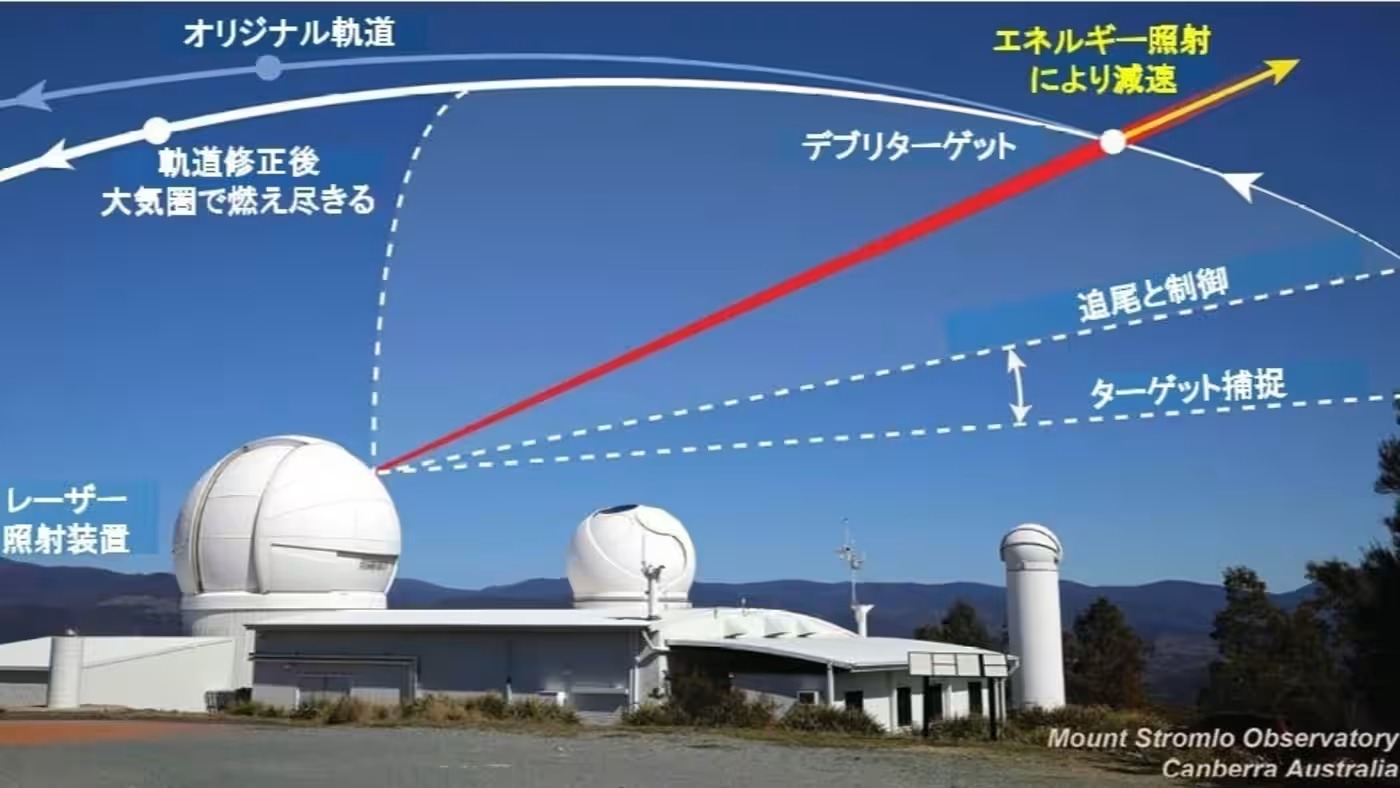In a bid to tackle the escalating problem of space debris, a Japan-based startup is making waves with its efforts to utilize ground-based laser beams to remove minuscule space fragments.
With the exponential growth of space-related activities globally, the threat posed by space debris originating from defunct satellites and rocket bodies has prompted innovative solutions.
The company, EX-Fusion, distinguishes itself with an innovative approach by utilizing its arsenal of laser technology, originally designed for fusion power, to effectively deal with the challenge of space debris.
Collaborating with Australian contractor EOS Space Systems, the startup is set to install a high-powered laser in an observatory situated outside Canberra.
According to the Asia Nikkei, the mission is divided into two phases. In the initial stage, the laser will be employed to track space debris measuring less than 10 centimeters. This presents a significant challenge, as such small fragments are notoriously difficult to target from the ground using lasers.
In the subsequent phase, EX-Fusion and EOS Space aspire to enhance the laser power, aiming to decelerate debris and induce its re-entry into Earth’s atmosphere, where it can safely burn up.
While various initiatives around the world are exploring satellite-based solutions, EX-Fusion’s ground-based strategy sets it apart. The advantages lie in the ability to easily handle improvements and maintenance on Earth.

EX-Fusion’s technology employs diode-pumped solid-state (DPSS) lasers, which differ significantly from weapon-grade lasers commonly associated with high-powered laser systems.
DPSS lasers use pulsed energy to apply force to fast-moving debris, functioning like brakes to slow down and eventually remove the space fragments.
Kazuki Matsuo, CEO of EX-Fusion, notes that despite the lower power requirement for space debris removal compared to nuclear fusion, both endeavors share common technical challenges.
This dual-purpose approach positions space debris removal as a valuable testing ground for the commercialization of fusion technology.
The Growing Problem of Space Junk
“Space debris” encompasses both meteoroids and orbital debris, with the latter defined as human-made objects in space that have become non-functional.
The European Space Agency reports that over 60 years of space activities have resulted in more than 9,300 tons of material currently orbiting Earth.
Ranging from large, defunct satellites to minuscule paint flecks shed during rocket launches, this space junk primarily congregates in low earth orbit (LEO), situated between 160 and 1000 kilometers above the Earth’s surface.
LEO is a crucial zone for satellite imaging and houses the International Space Station (ISS). Despite its significance, NASA characterizes LEO as an “orbital space junkyard,” posing a substantial collision risk to the ISS.
Presently, over 4,550 operational satellites and 3,000 non-functional ones occupy this area, monitored by systems to avert collisions. The speed of objects in LEO, approximately 17,000 mph, means even small items can cause severe damage.
Beyond immediate concerns, the threat of Kessler Syndrome, where existing debris triggers a self-replicating cascade of orbital junk, looms large.
The US Department of Defense oversees a catalog of more than 29,000 objects using the Space Surveillance Network (SSN), which combines optical and radar sensors. Despite monitoring efforts, quick removal of satellites after mission completion is crucial to prevent further space junk.
Scientists caution that the rising volume of space debris poses a threat to our ability to access space, as accumulations of orbital debris could create formidable obstacles for launching sensitive equipment.
The European Space Agency (ESA) has issued a warning, stating that our current practices in space are unsustainable.
Various methods for removing inactive satellites exist, such as pulling them into Earth’s atmosphere for incineration. The European Space Agency’s “space claw,” ClearSpace-1, set to launch in 2025, aims to capture and dispose of space junk.
Alternatively, in 2021, Japan’s Astroscale demonstrated success with Elsa-D, a system using magnets to capture and remove debris, addressing the challenging task of object capture in orbit.
The Federation of American Scientists suggests innovative approaches like ground and space laser nudges, which present economical alternatives to the methods currently employed for mitigating debris.
However, overcoming challenges associated with precision and power is crucial in the development process. Nonetheless, EX-Fusion’s initiatives are forging new paths in addressing the growing issue of space debris.
These efforts could complement existing services that concentrate on removing larger debris fragments, such as those provided by companies like Astroscale.
- Contact the author at ashishmichel(at)gmail.com
- Follow EurAsian Times on Google News